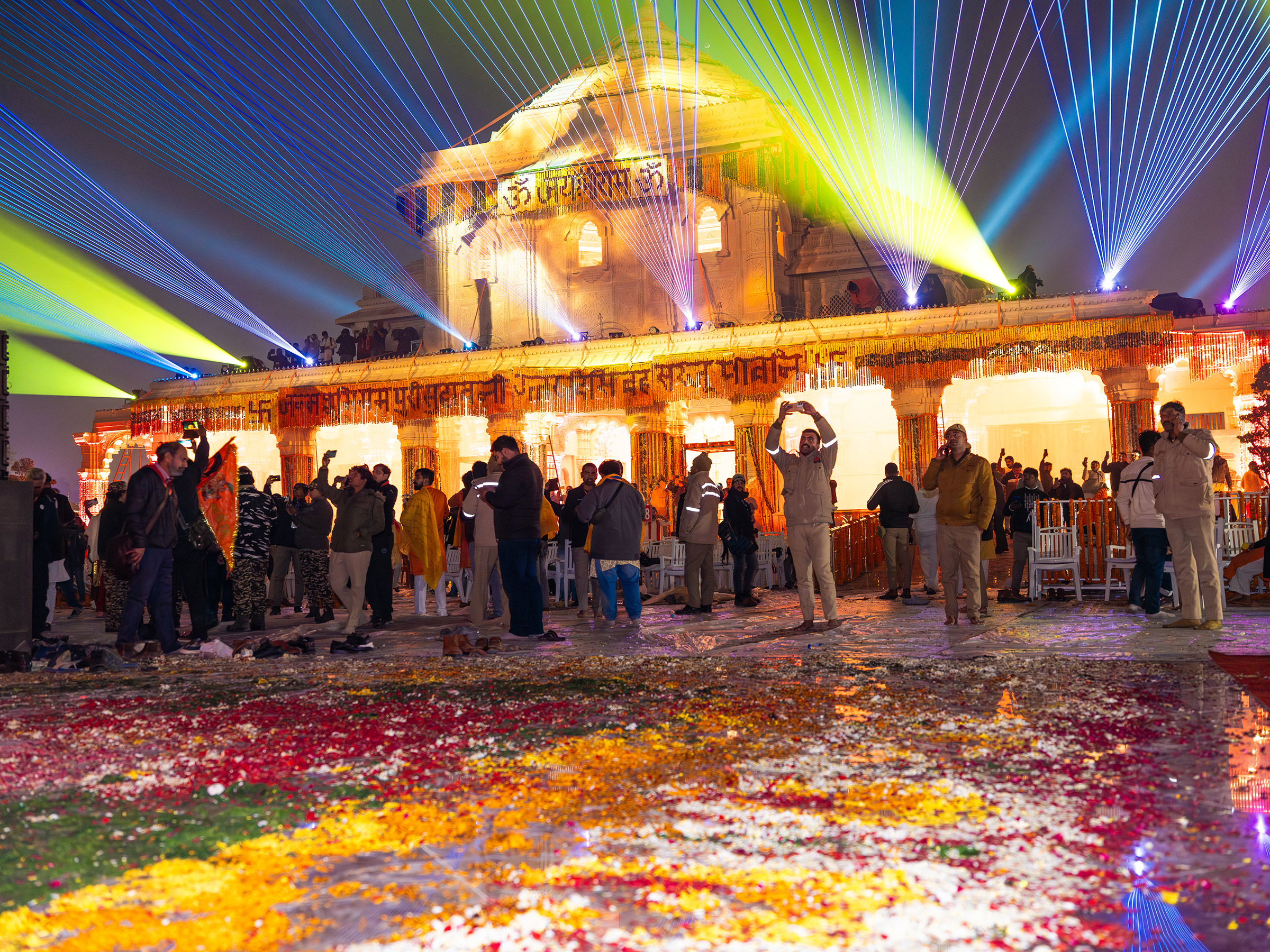For centuries, Hindu pilgrims and devotees have offered prayers at thousands of temples in Ayodhya, a city in northern India believed to be the ancient birthplace of Lord Ram, one of Hinduism’s most revered deities. But none have warranted a $3.85 billion makeover of the city before the Ram Mandir, consecrated on Monday, Jan. 22 by India’s Prime Minister Narendra Modi in a grand opening decades in the making.
In the last few months, Ayodhya—once a crumbling, dusty town on the banks of the Saryu River, a tributary to the Ganges—transformed into what some Hindu nationalist leaders have dubbed the “Hindu Vatican.” Frenzied construction work has resulted in a brand-new airport, an expanded railway station, and several luxury hotel chains that are expected to welcome nearly 50 million religious tourists every year. Some 3,000 homes and shops were bulldozed to widen four major corridors and create an eight-mile-long arterial path to the temple, which is surrounded by arched sandstone gates and 162 murals depicting Ram’s life.
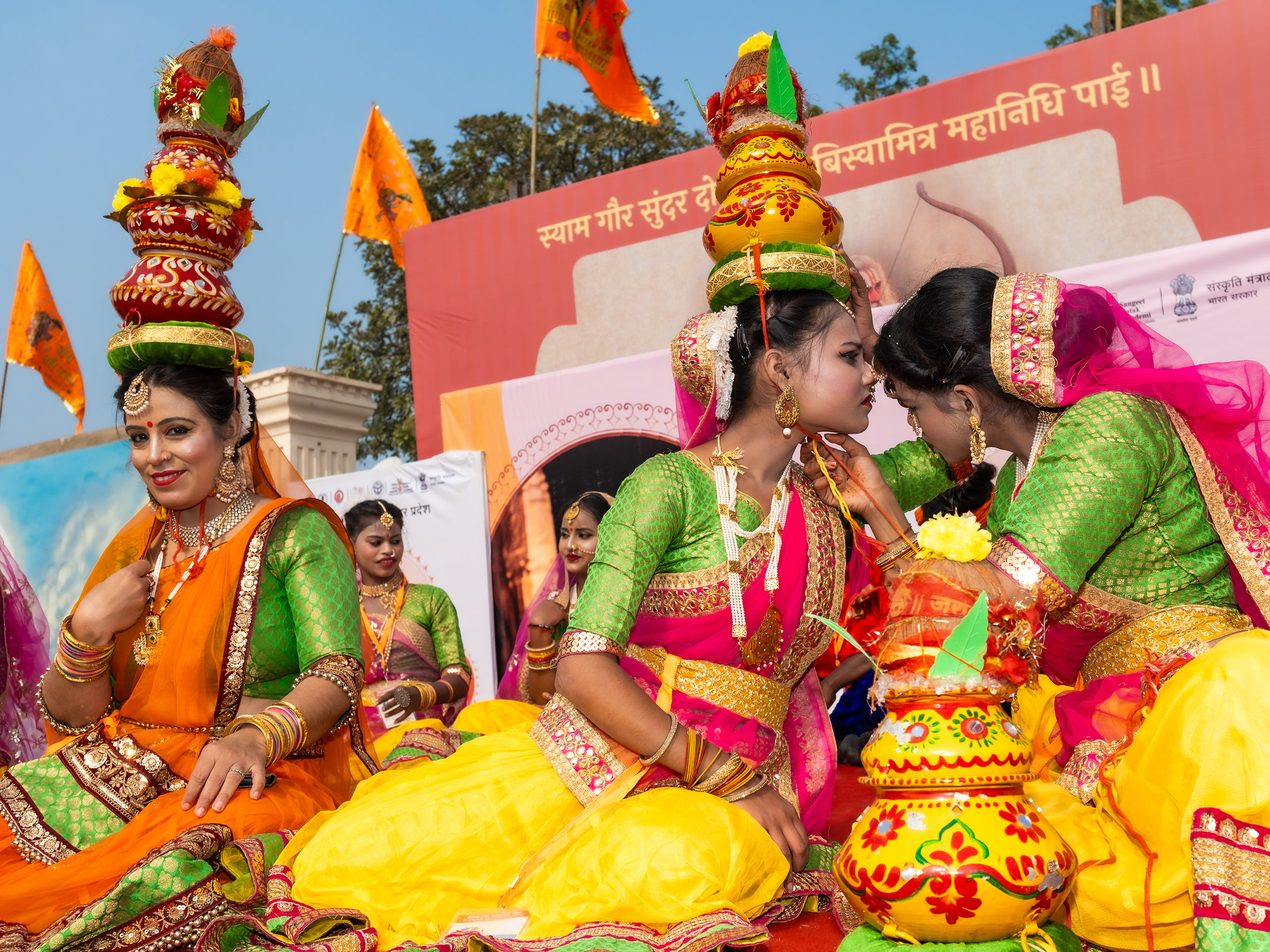

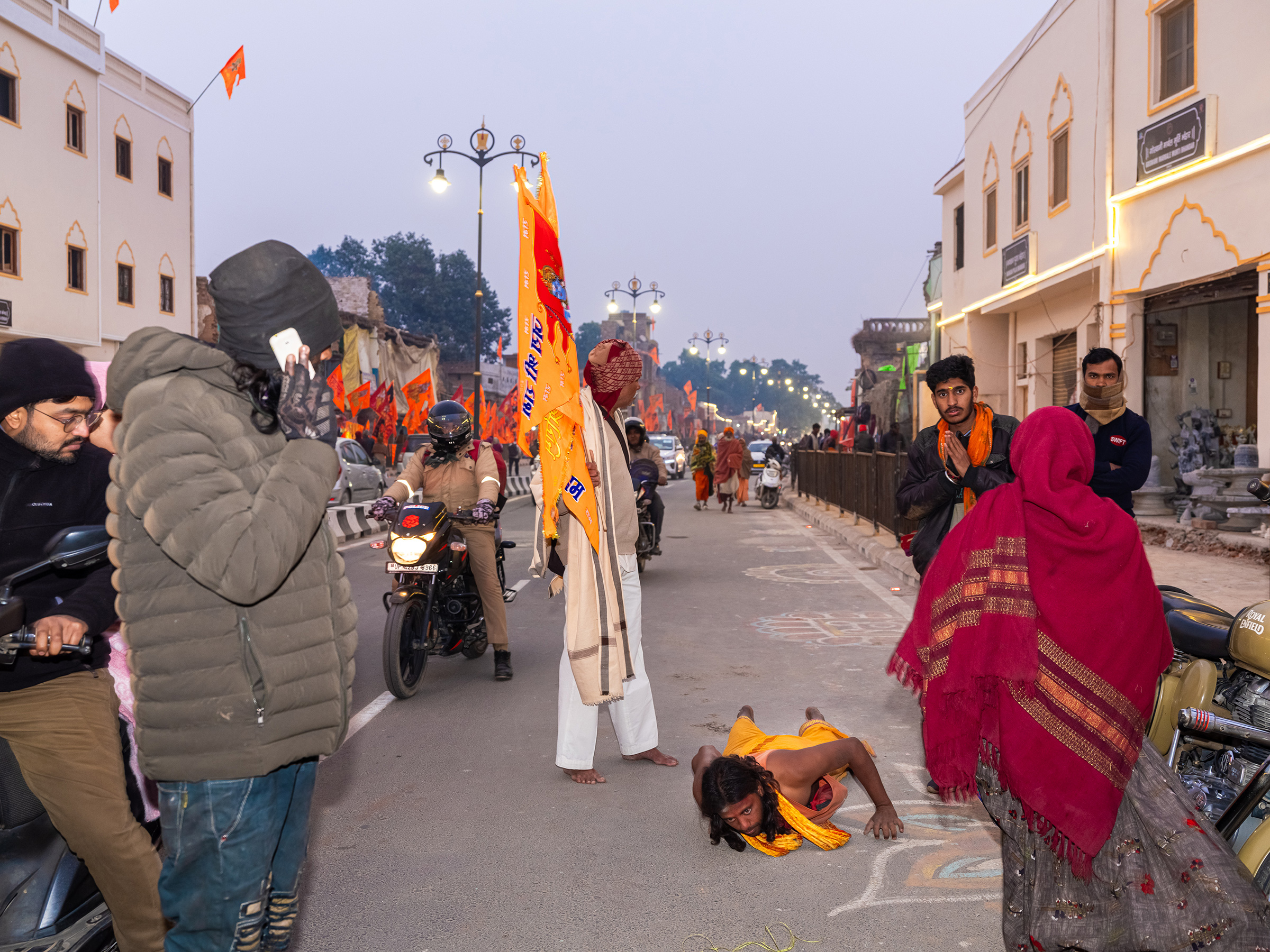
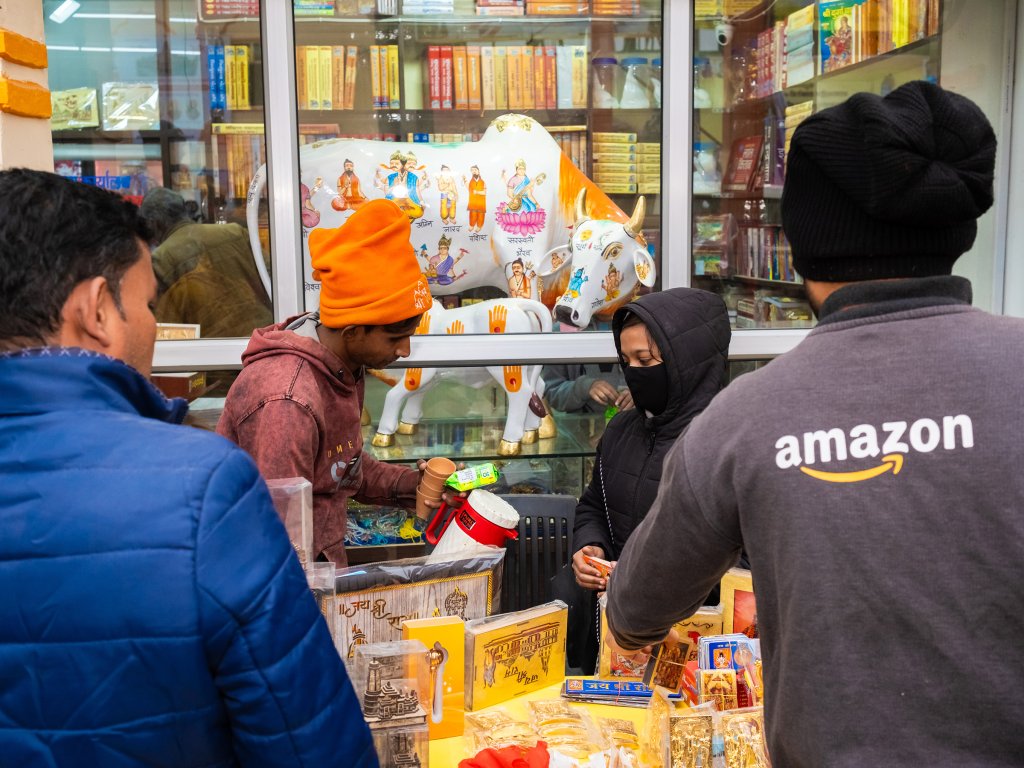
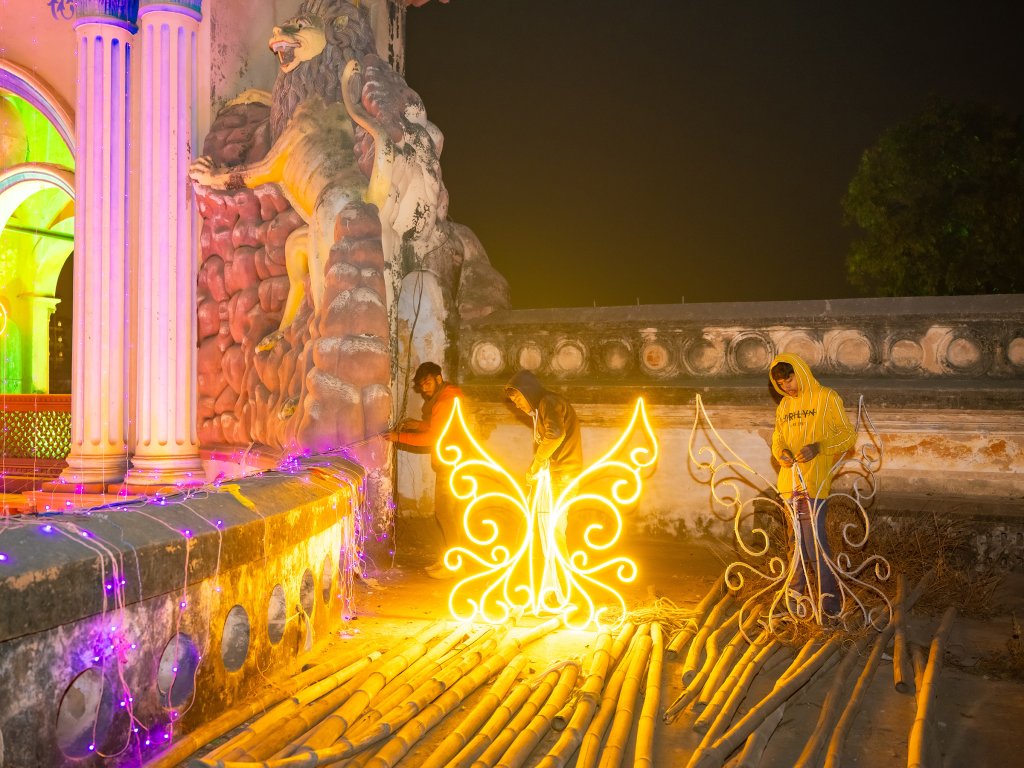
The temple has been built on one of India’s most controversial sites, replacing the Babri Masjid, a 16th-century mosque that was demolished by Hindu zealots in 1992 who believed it stood on the site of another Hindu temple. The events sparked nationwide communal riots that killed thousands of people. In 2019, the Supreme Court weighed in on the matter, clearing the way for the new temple’s construction; the following August, Modi laid down a 90-pound silver brick on the site to mark its inauguration. It was “an emotional moment” for India, said Modi, adding that “the wait of centuries is coming to an end.”
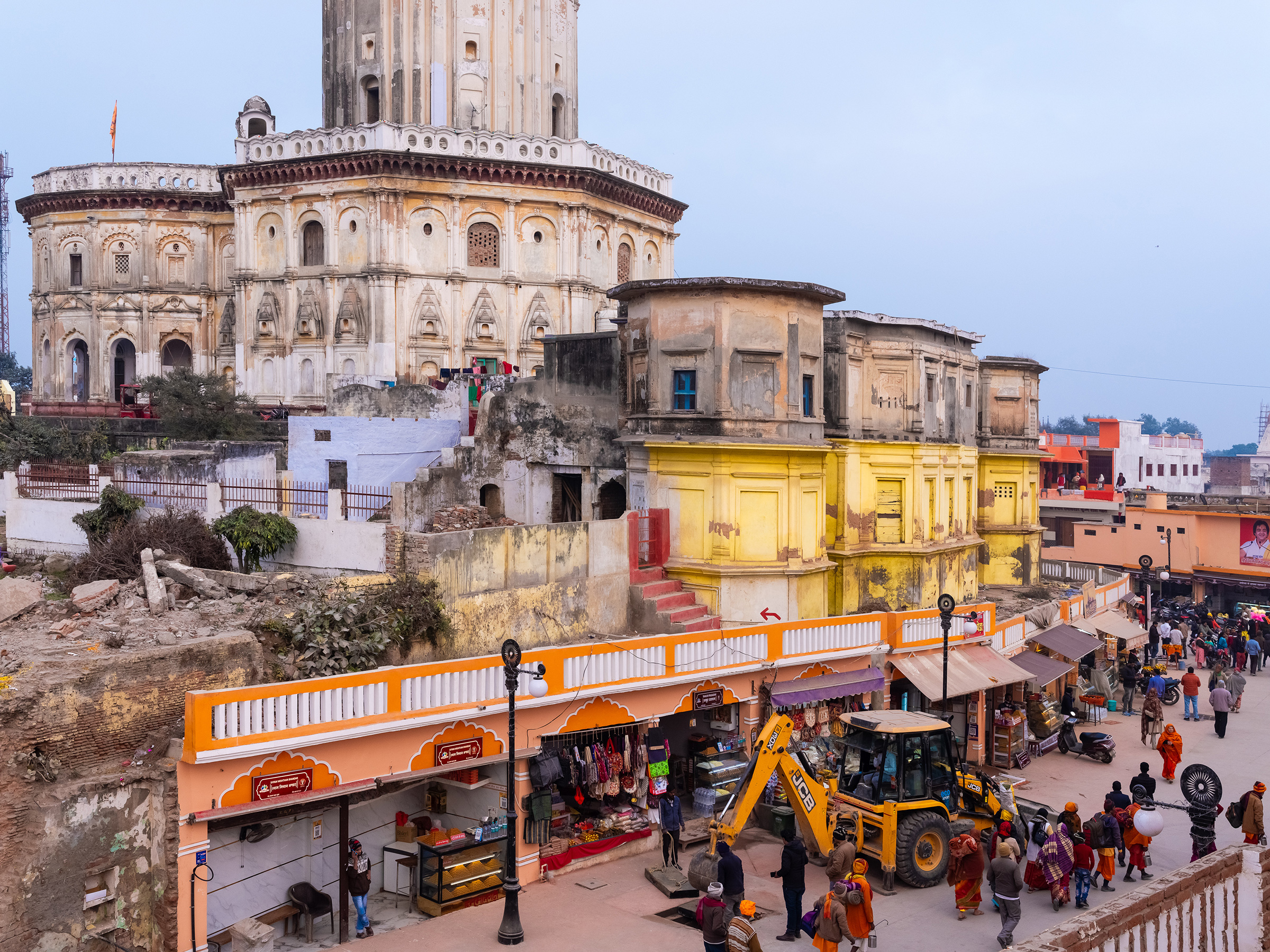
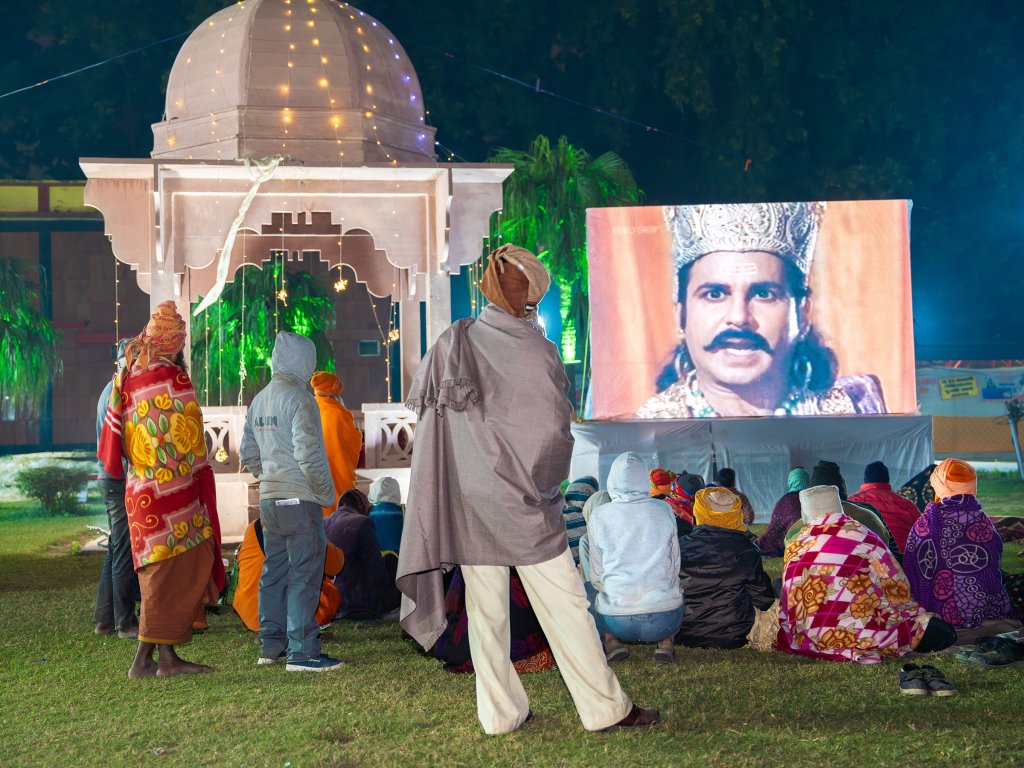
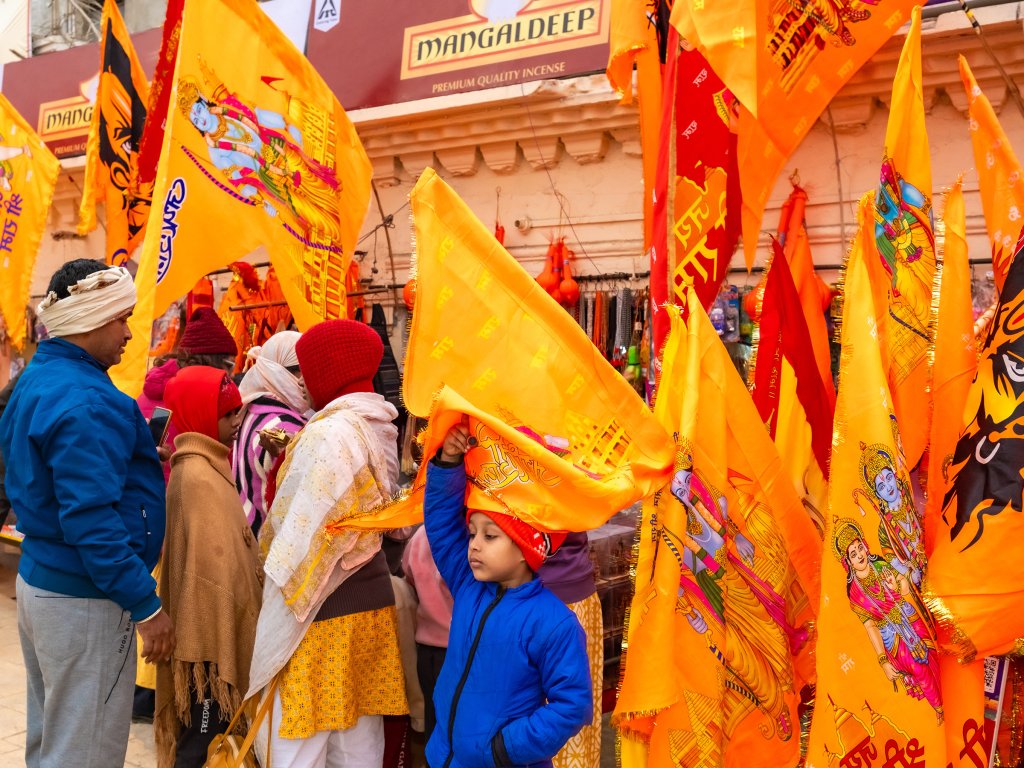
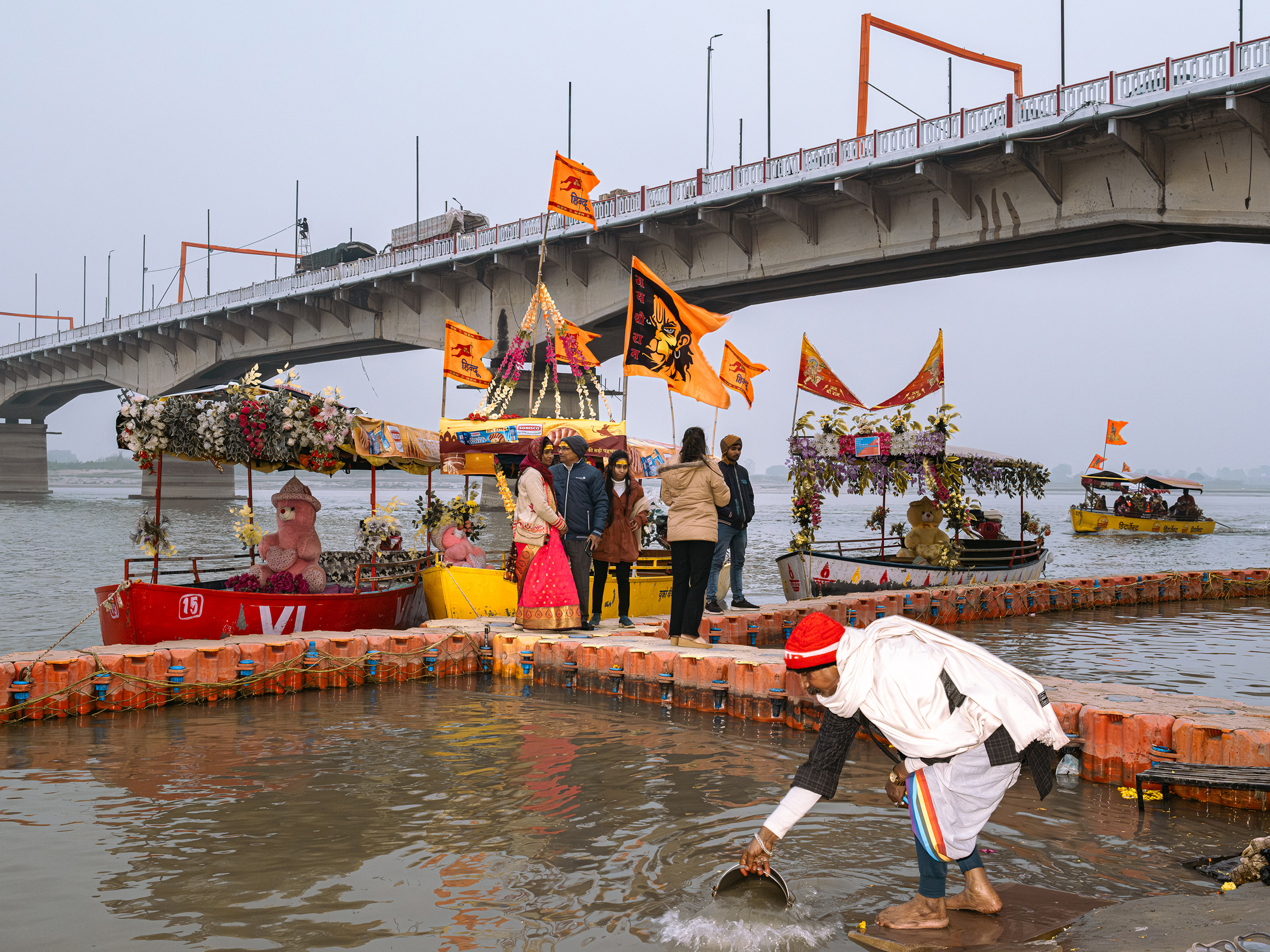
In the days leading up to the opening, millions of jubilant devotees flocked to the city to celebrate. They danced and sang religious songs, while government party workers handed out pamphlets commemorating the event. The streets were decked with saffron flags, marigold garlands, and signs depicting Lord Ram and Modi. Most were oblivious to workers still applying last-minute touches to a temple that is not yet complete—construction is expected to wrap by the end of 2024.
Devotees present in Ayodhya felt that Lord Ram had returned to his rightful home. Photographer Mahesh Shantaram, who captured these moments on camera, said that many told him: “I never thought I’d live to see this day!”
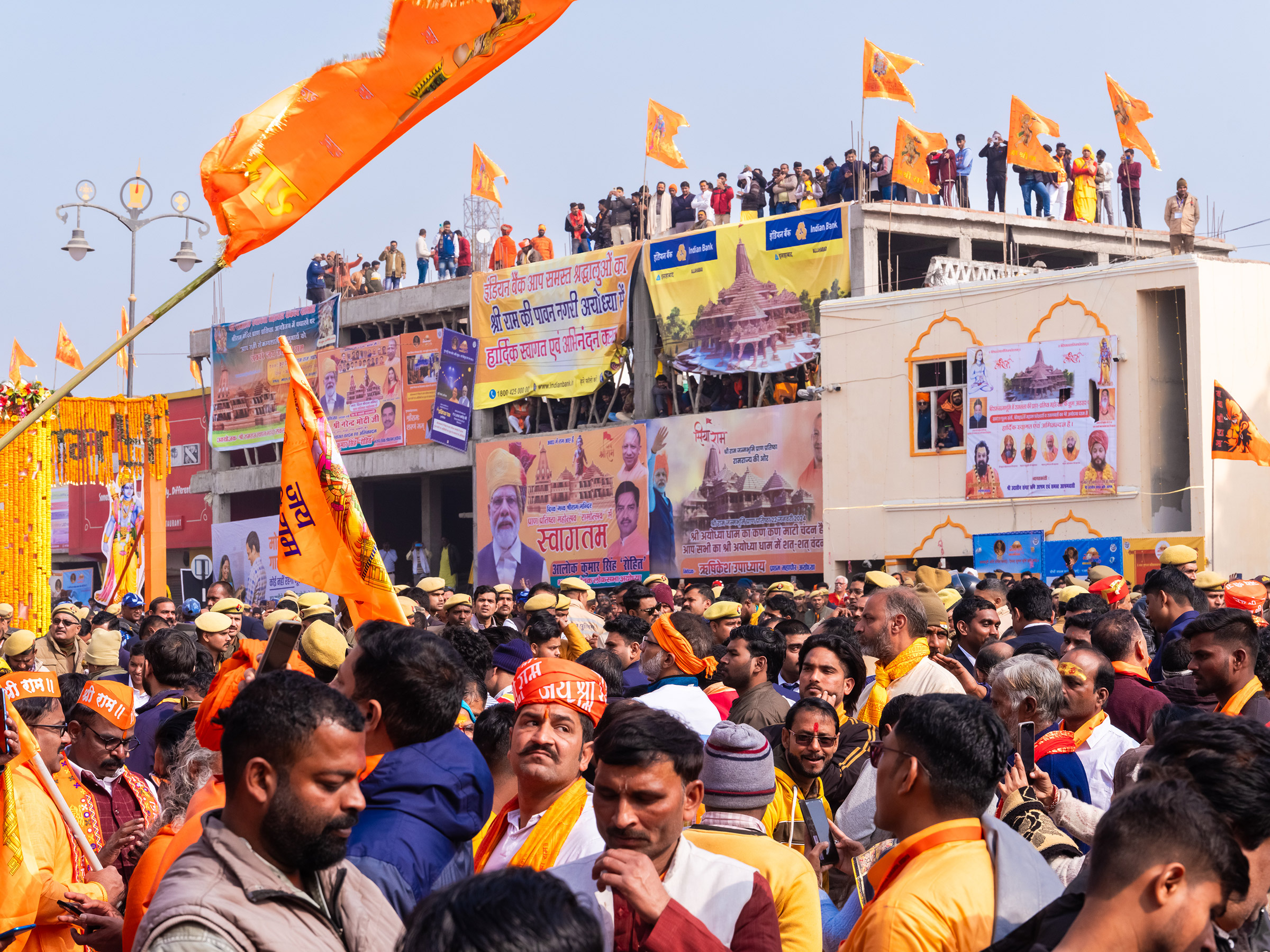
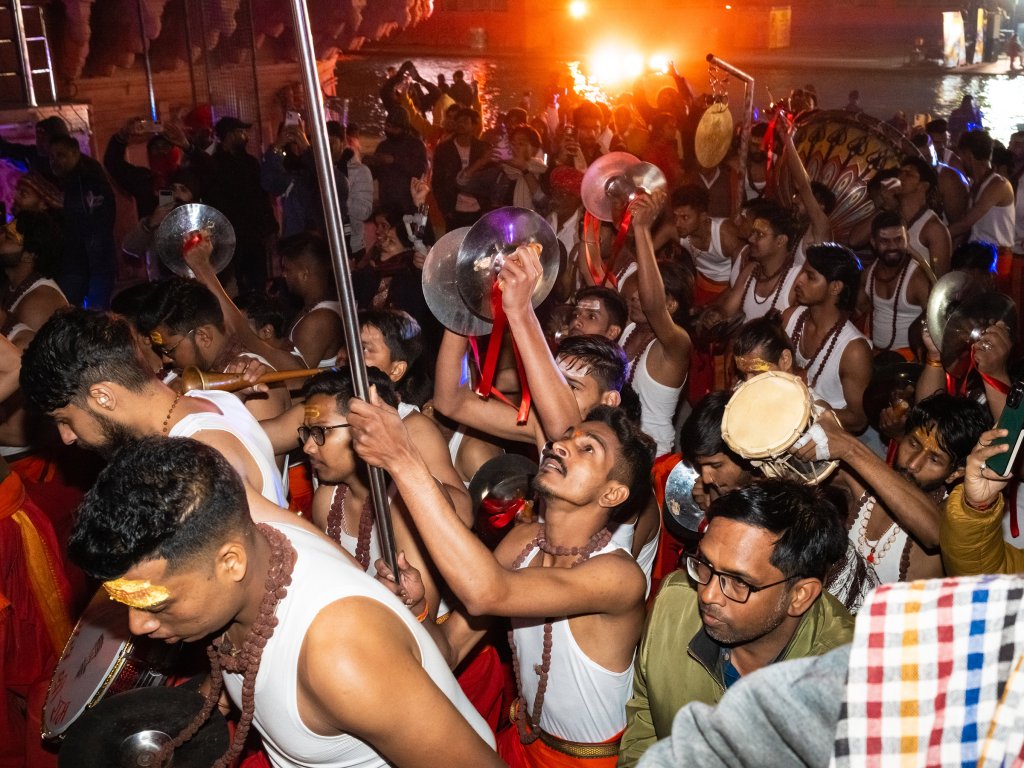
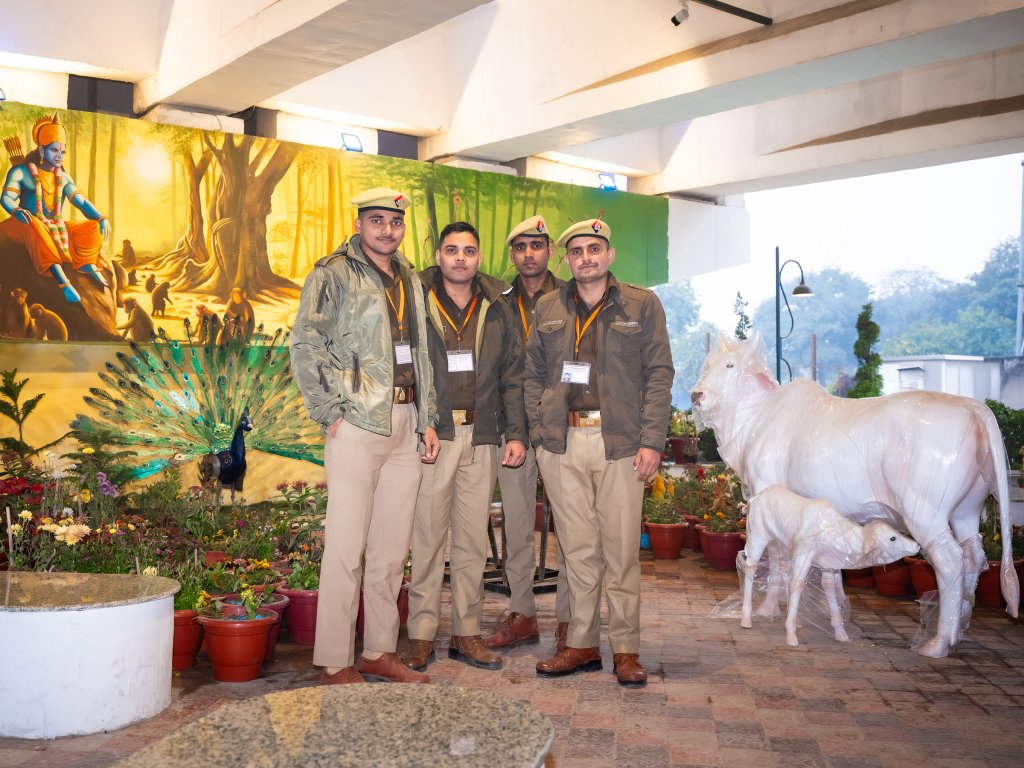
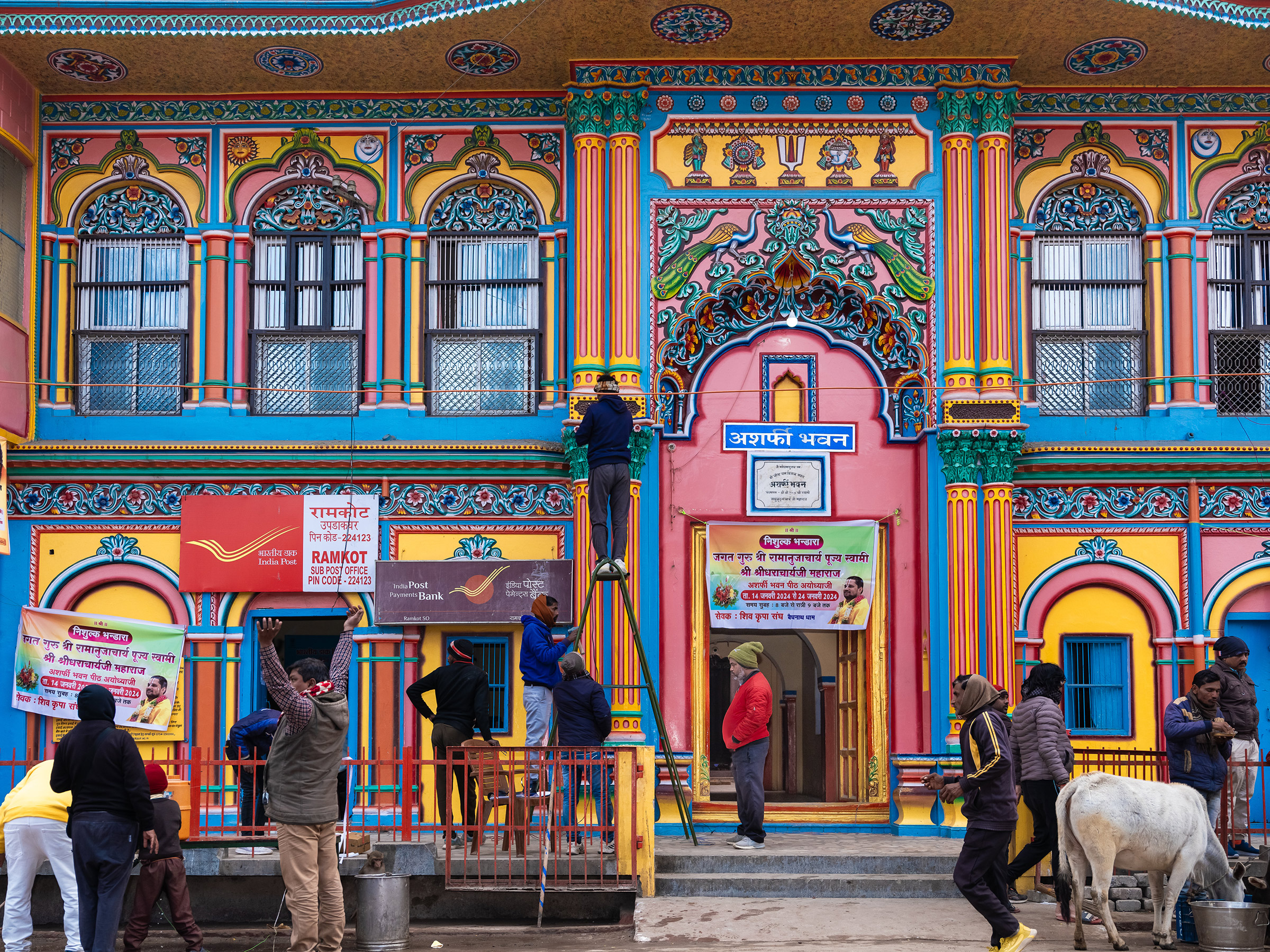
The most extreme devotees made their way there in the form of penance—by walking, cycling, and chanting for thousands of miles. One devotee, 32-year-old Shubham Garg, prostrated continuously for over 370 miles from his hometown in Saharanpur, Uttar Pradesh. Witnessing the consecration felt like “I entered heaven after all my sins were washed away,” Garg tells TIME. His father once went to jail for protesting against the Babri Masjid in the 90s, but on this day, “a dream that generations of my family had nurtured finally came true,” he adds.
Some states across the country declared the day a public holiday, and schools and the stock market closed. About 20,000 security personnel and more than 10,000 security cameras monitored the event, and with good reason—nearly 8,000 official guests, including politicians, diplomats, business leaders, sports figures, and Bollywood celebrities were in attendance. They watched the ritual on a giant screen outside the temple, as military helicopters showered the temple with flower petals.
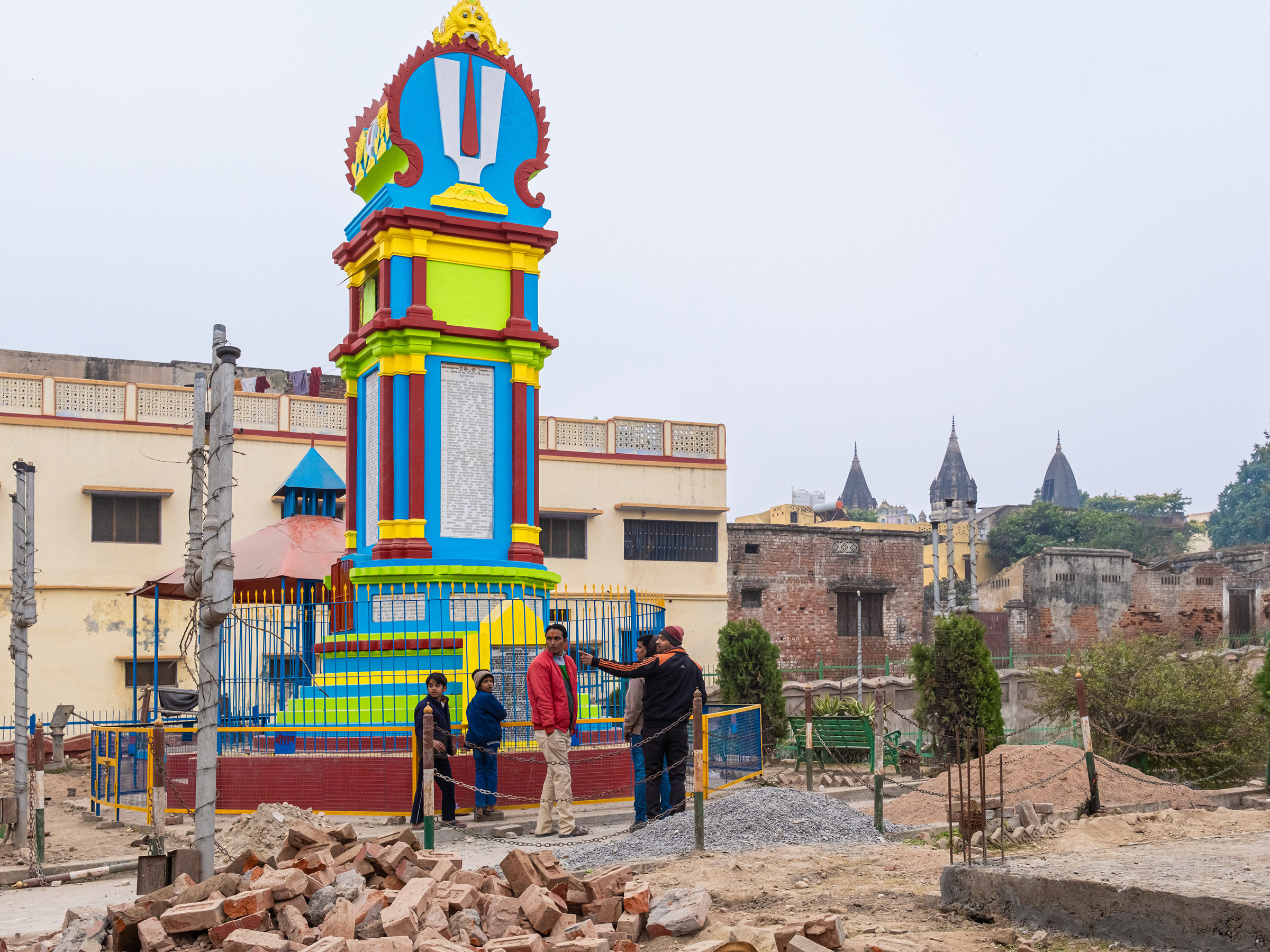
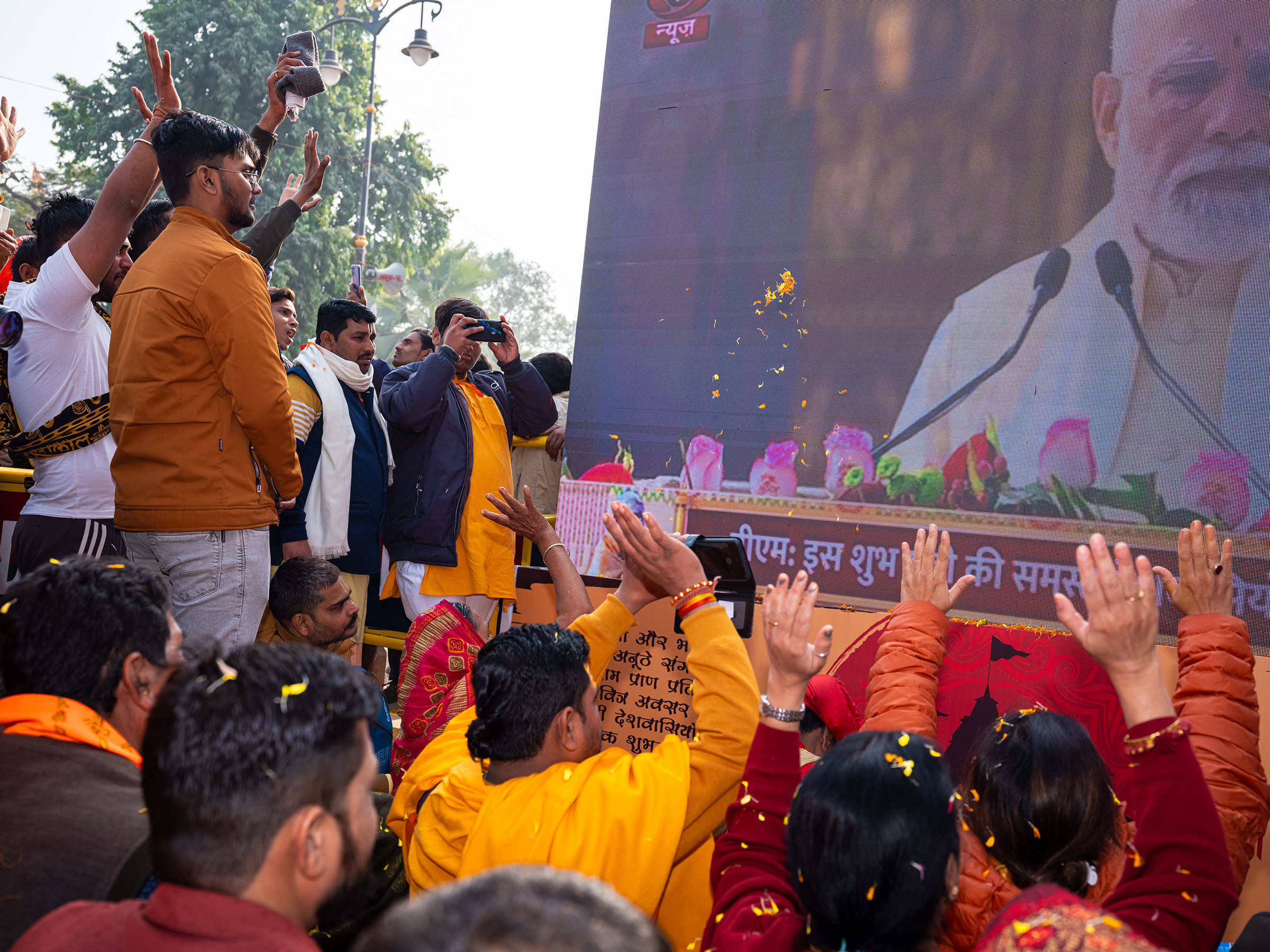
Inside the temple’s sanctum, Modi presided over the Pran Pratishtha, or consecration ceremony, dressed in a traditional white tunic as he unveiled and prostrated before a 1.3-meter-long black stone statue of “Ram Lalla” or Lord Ram as a child, adorned with gold and diamond jewelry. As priests chanted hymns, Modi performed religious rituals before giving a speech that was televised live on nearly every news channel across the country. In it, he hailed the temple opening as “the beginning of a new era.”
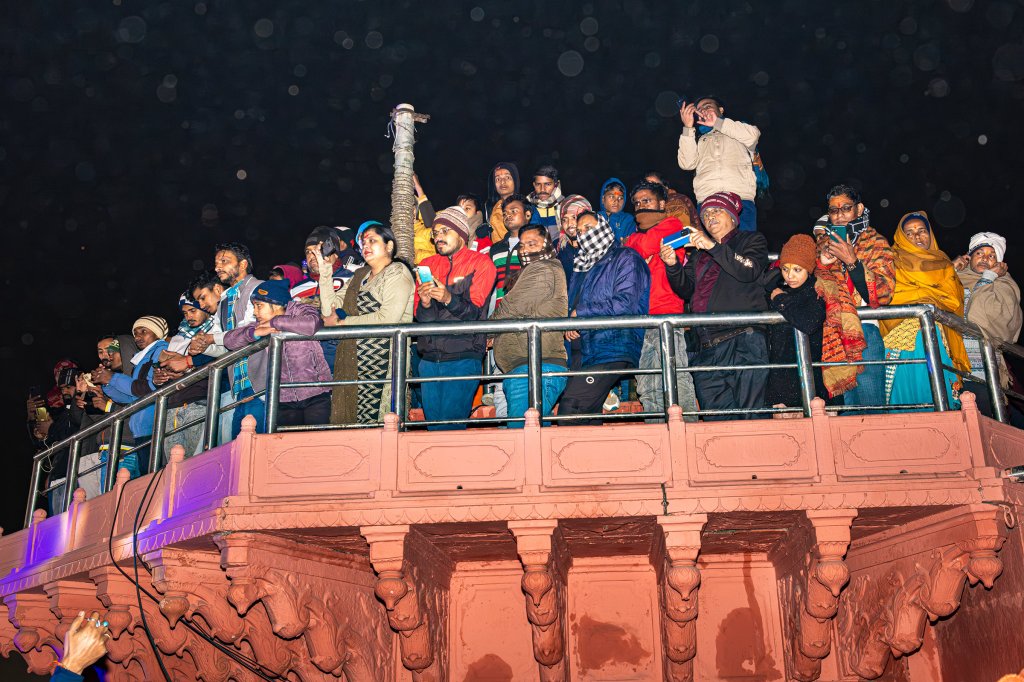
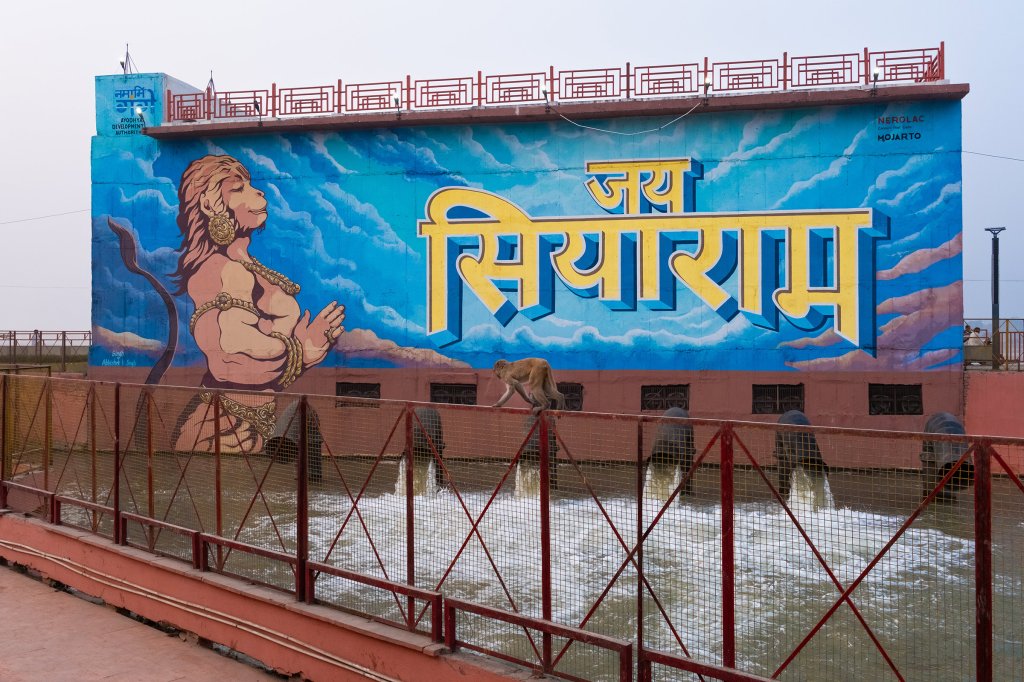
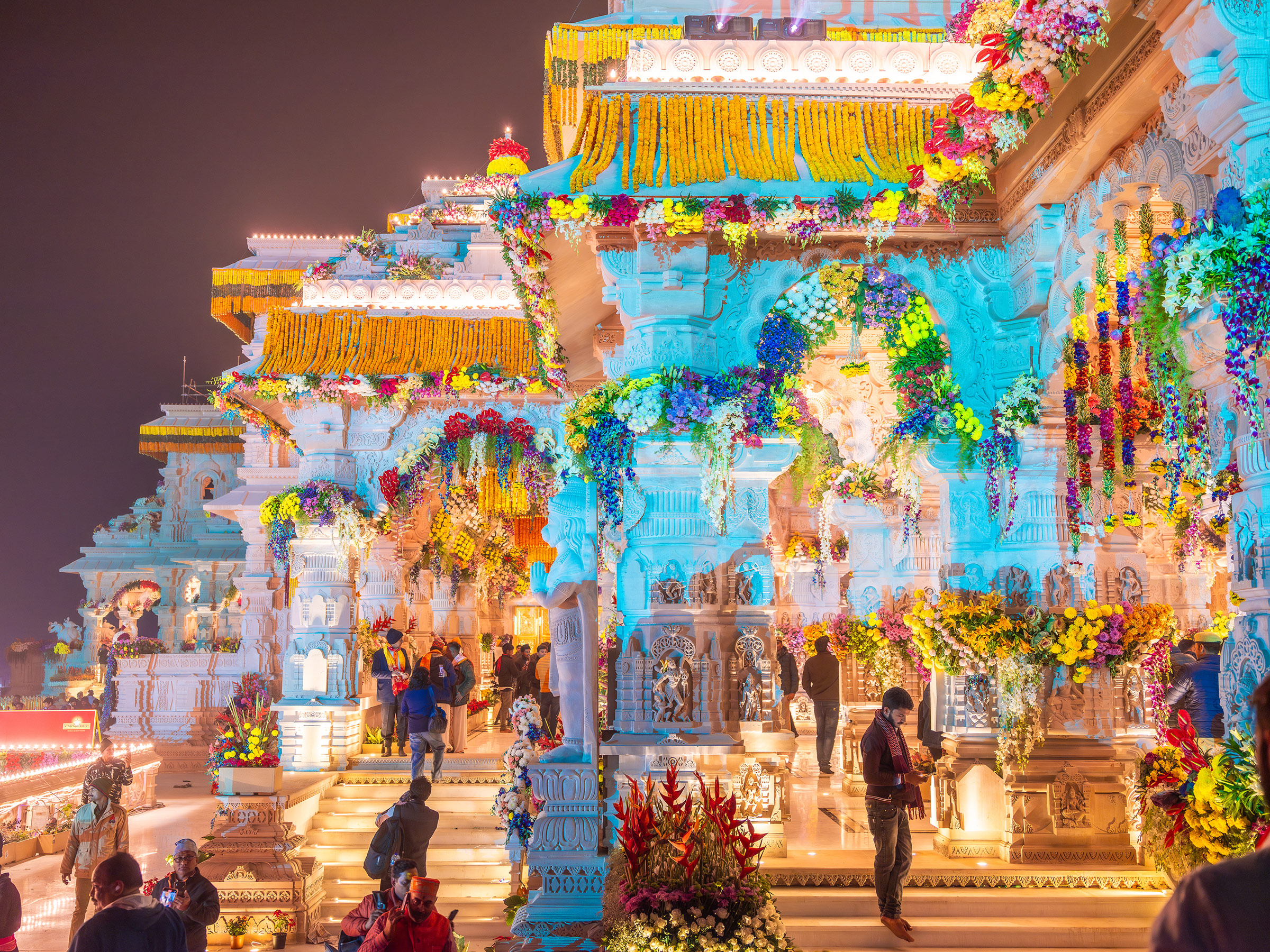
“After centuries of waiting, our Ram has arrived,” he said, adding “Ram is not a dispute, Ram is the solution.”
The temple’s consecration came early for a reason. In a few months, Modi will seek, and likely win, a third consecutive term in power during India’s general elections. To his supporters, Ram Mandir represents a victory for Hindu nationalists. Meanwhile, opposition parties boycotted the consecration, while members of the Muslim community said the event evoked fear and painful memories. But in a country where 80% of the population is Hindu, the Ram temple has nevertheless marked a moment in Modi’s India when the secular republic is passing the baton over to a Hindu Rashtra.
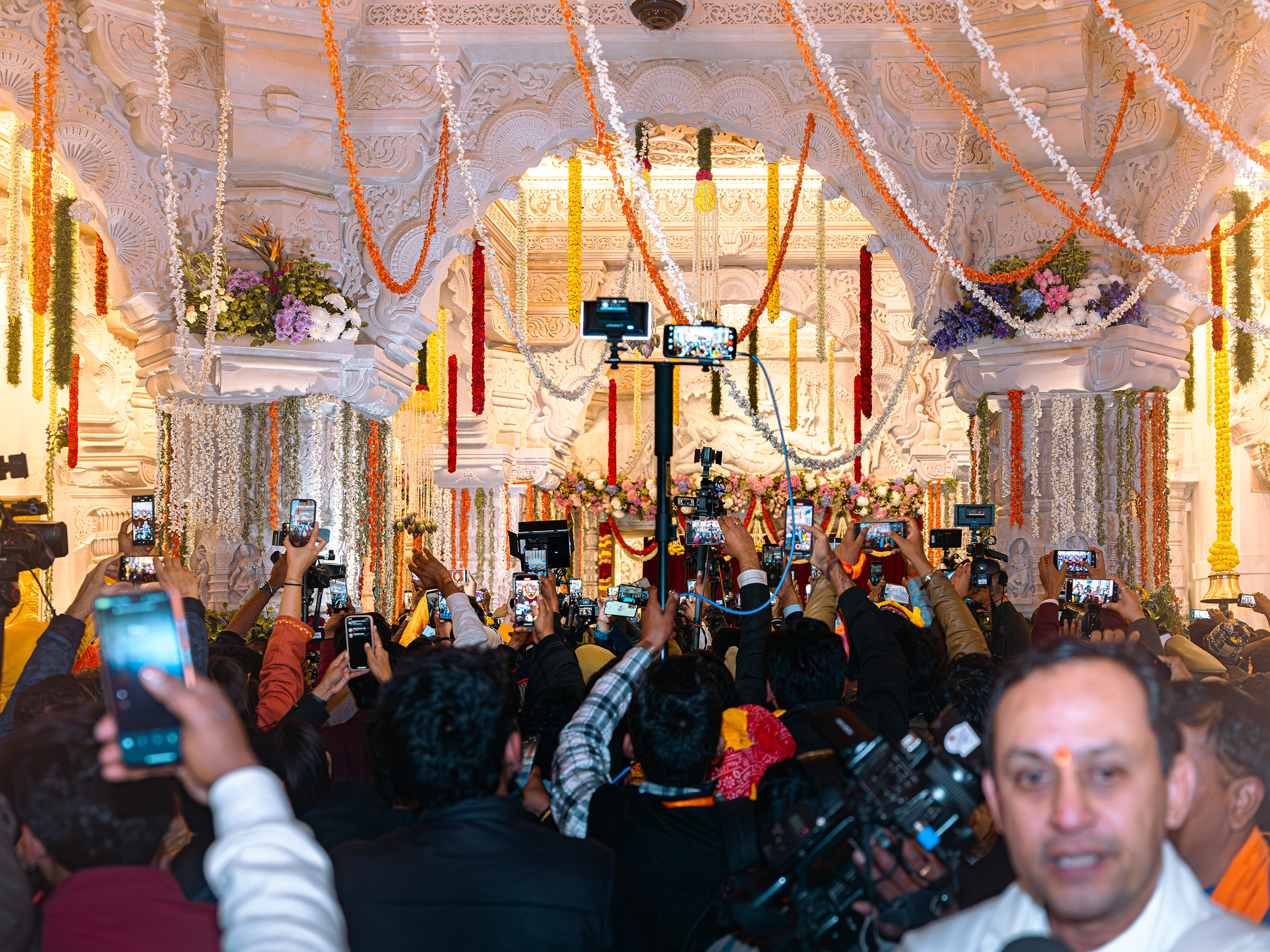
More Must-Reads From TIME
- The 100 Most Influential People of 2024
- Coco Gauff Is Playing for Herself Now
- Scenes From Pro-Palestinian Encampments Across U.S. Universities
- 6 Compliments That Land Every Time
- If You're Dating Right Now , You're Brave: Column
- The AI That Could Heal a Divided Internet
- Fallout Is a Brilliant Model for the Future of Video Game Adaptations
- Want Weekly Recs on What to Watch, Read, and More? Sign Up for Worth Your Time
Write to Astha Rajvanshi at astha.rajvanshi@time.com
